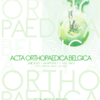The effect of transitional vertebrae and spina bifida occulta on disc herniation, disc degeneration, and end-plate changes in pediatric patients with low back pain
Transitional vertebrae; spina bifida occulta; disc herniation; disc degeneration; endplate changes; pediatric
Published online: Aug 23 2022
Abstract
The aim of the study is to investigate the assumption whether lumbosacral transitional vertebrae (LSTV) and spina bifida occulta (SBO) cause lumbar disc herniation (LDH), intervertebral disc degeneration (IDD), and vertebral endplate changes / Modic changes (MCs) in children and adolescents with low back pain (LBP). Four hundred patients (aged 10-17) with LBP persisting for at least six weeks were included in the study. Lumbosacral X-rays were examined for the presence of LSTV and SBO. The prevalence of IDD/MCs and LDH at L4-5 and L5-S1 levels were investigated by evaluating the lumbosacral MRI of the patients with and without LSTV-SBO. The study population consisted of 219 girls and 181 boys with mean age 14.9±1.9. LSTV was determined in 67 (16.8%) patients and SBO in 62 (15.5%). No significant difference was observed in the prevalence of IDD, MCs, and LDH in patients with and without LSTV/SBO. LSTV and SBO were not observed in approximately 80% of patients without LDH and IDD/MCs. The presence of LSTV and SBO does not appear to represent a risk factor for early degeneration in lumbar spine and LDH in children and adolescents with LBP.
